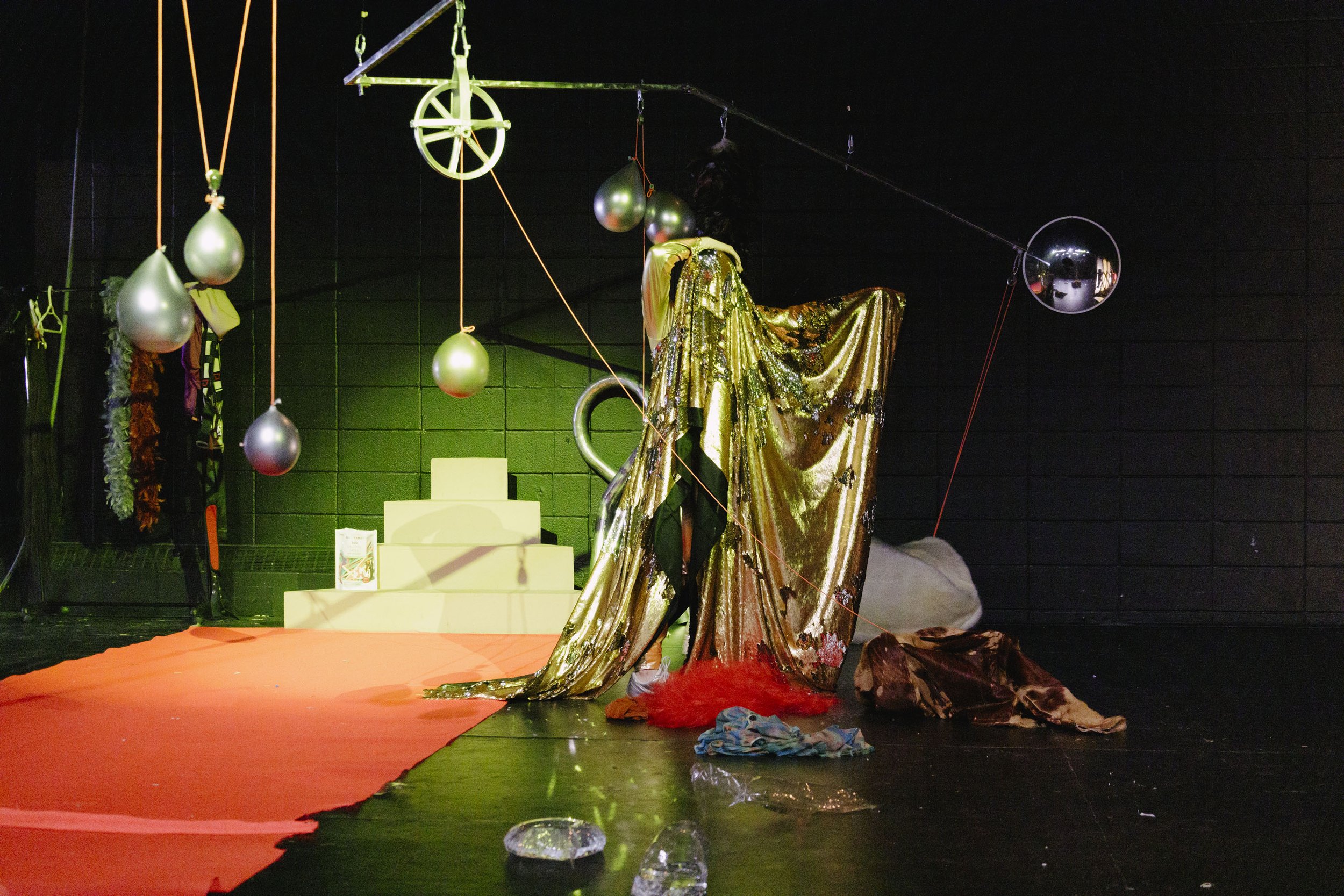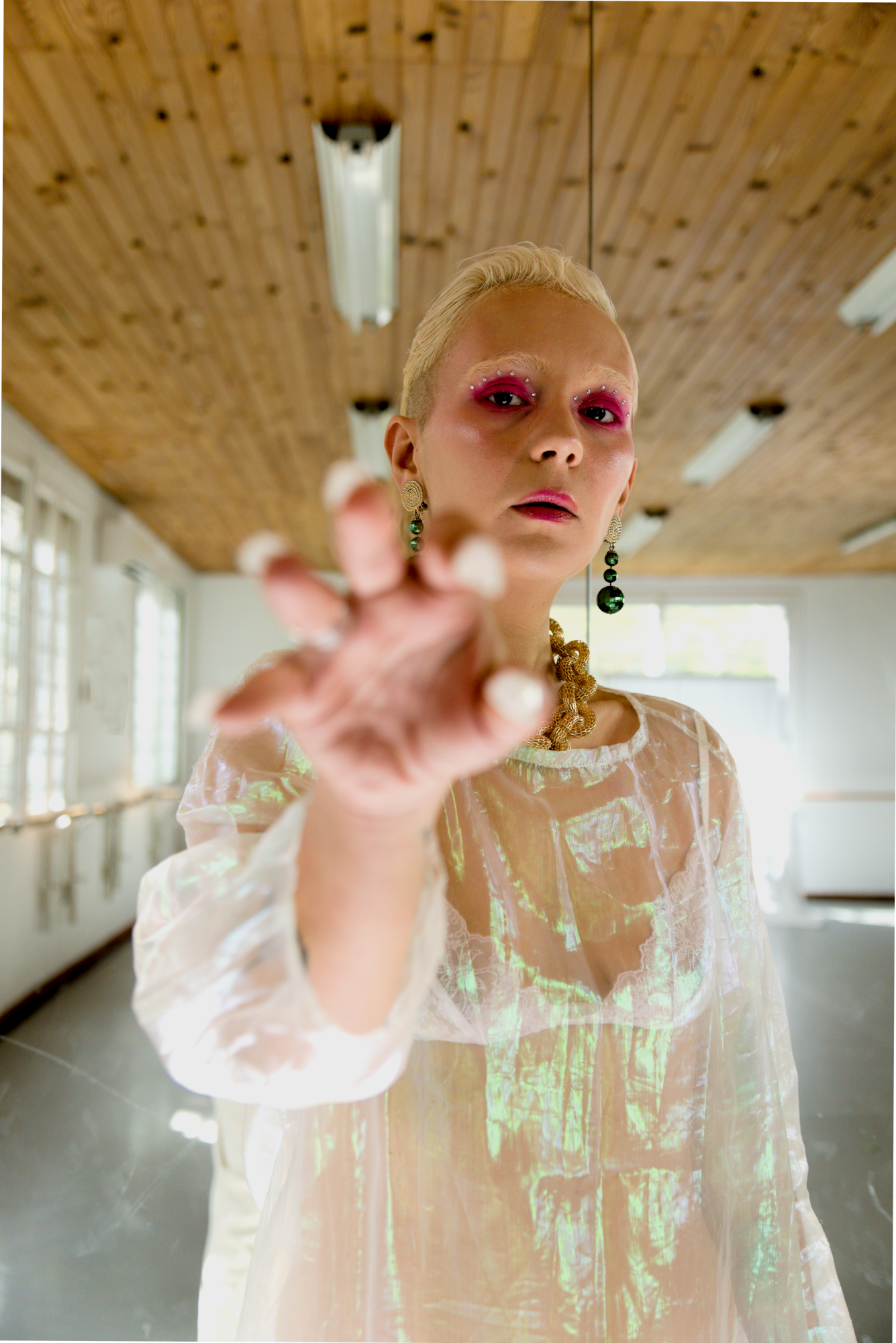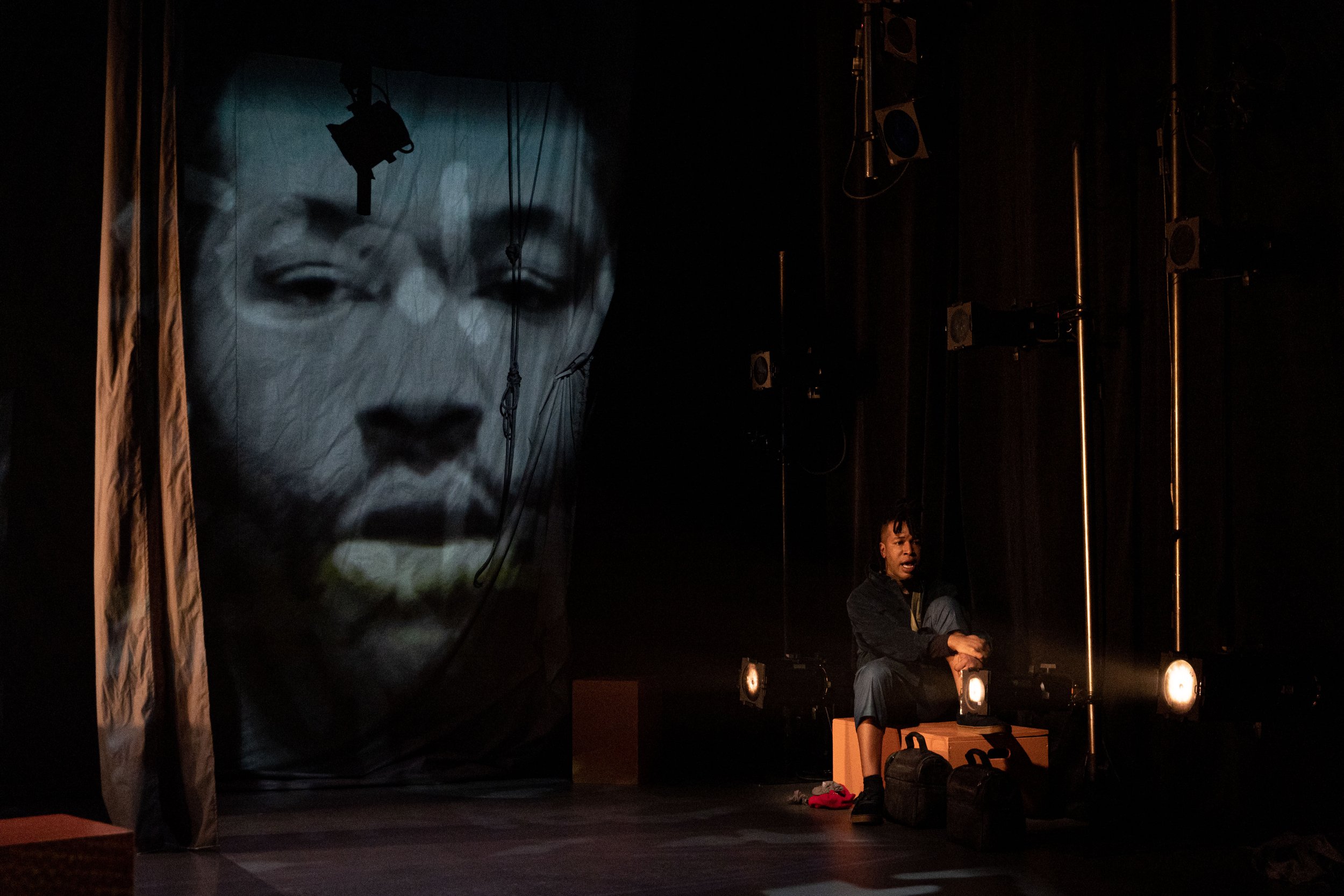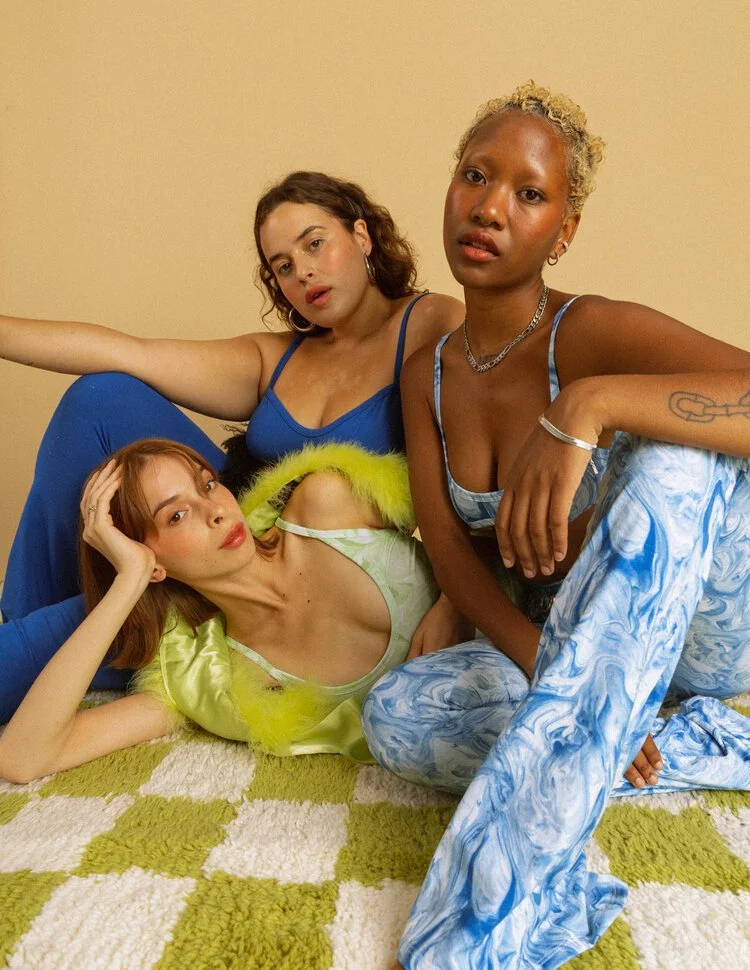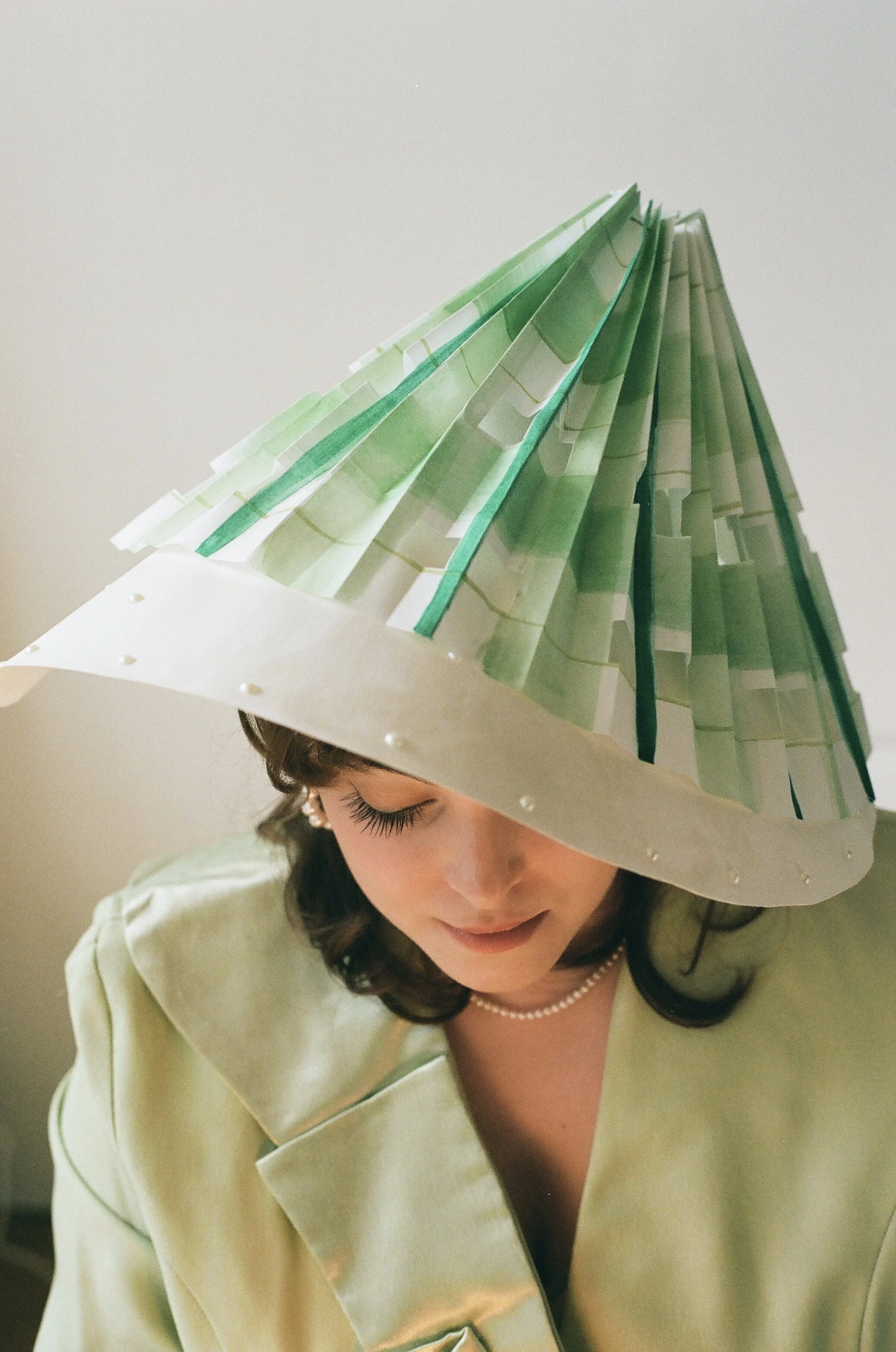Artist Spotlight: Jen O'Connor (Part II)
Jen O’Connor. Photo courtesy of CJ Sommerfeld
In our first chat with Vancouver-based artist Jen O’Connor, she dove into the series of events which initiated her purpose to integrate consumer waste into creative works. It all started with a rejection of what she’d been taught was the first step to making art: purchasing materials. After beginning to source items that were simply around, she was propelled into garbage sculpture and subsequently constructed a public stage where she hosted a TV show-formatted performance titled Trash Talk.
Following her sculpture and TV show endeavours, O’Connor’s divergent uses for what society refers to as ‘single-use items’ and other discarded materials have evolved into a painting practice where she merges garbage with oil paints on canvas. In part-two of our conversation with O’Connor, she further elucidates on the confluence between her garbage works and consumer culture, as well as why she documents many of her pieces via film.
AC: Your artist statement acknowledges that society's discarded materials—which you integrate into your works—hold embedded narratives of our consumer culture. Can you elaborate on the stories that pertain to the waste, and the greater narrative that comes together once waste materials are transformed on canvas?
JO: The narratives of consumer culture are embedded in a way that we do not notice them anymore. The most banal object, such as a can, is so commonplace that we take for granted the necessity of cans when there could be alternatives to single-use objects.
Through the process of smelting the can, its own narrative is betrayed by revealing that it is not made of solely aluminium but also a composite of plastic. The paintings may appear as an optimistic solution for the issue of waste, but this is not the reading I intend to illustrate. I want to depict, rather, the great deal of effort that must be made to reintegrate something as simple as a few pieces of refundable waste, and give them the dignified status as “diverted permanently from the landfill”. These paintings should raise the problem of reintegration of waste.
Even in my video work, the detritus does not become a new entity on its own. It simply gets documented through its narrative journey to the landfill. My work aims for proportional representation of waste in the gallery, of which I have barely scratched the surface.
Jen O’Connor. Photo courtesy of CJ Sommerfeld
AC: Upon completion, you archive many of your works that are too big to store using video documentation. How did you formulate the idea to preserve your larger pieces using this approach?
JO: When I decided to produce works using garbage, I had to abandon my painting practice. Since there was so much material available, I rapidly began to work on a larger scale. These objects were not commodifiable, nor could they be stored easily, so the only hope for them to exist as artworks was through an ephemeral assemblage. In an effort to preserve my work, I chose to document.
AC: Can you give us some examples of works which you documented via film?
The first body of work that I made entirely out of garbage was called “The Apartment”. It was a replica of my bachelor apartment made entirely out of garbage. After completing this work, I realised that I could also use both my body and others’ as free materials through performance; I then decided to build a theatre in the parking lot made entirely out of waste. This was named the Garbage Conglomerate Theatre and became the stage of Trash Talk.
Following my work through the GCT and my post-graduation art practice has veered towards film and video where I do not make the usage of garbage explicit. Instead I produce short films with a collaborative group named Sacred Projections; we have no funding which leads us to make use of free, found, scavenged and borrowed materials.
AC: What’s next on the horizon for your upcoming works?
JO: I like to paint, draw, and illustrate tattoos when I am working solo, but I am invested in creative collaborative work at the moment. I believe that collaboration is just as important, and that it can be quite a difficult skill to have people working together towards a goal or a dream. Given the polarized directions in which our society is being pulled, I think that the community working together is of paramount importance, so I’ve been channelling my energy into producing Sacred Projections.
Sacred Projections is an open call to artists where we come together to produce short films on a monthly basis. Any type of collaboration can be difficult, so working together creatively gives us some room for abstraction. We work together to solve problems without the situation needing to be overly stressful. We are all participating because we want to, and everyone brings something to the table.I want to continue creating in this way for the time being.
Aside from that project, I am still smelting cans and receiving interesting results in doing so. As I continue to smelt, I am collecting these materials for a future series of paintings. I also have a series of painted works in progress, entitled “22”; this series draws upon archetypes, alchemy, astrology, psychology and human behaviour. It will illustrate narratives that are reoccurring in the sphere of human activity.
Jen O’Connor
Website | Sacred Projections YouTube | Garbage Conglomerate YouTube
CJ Sommerfeld (she/her) is a Vancouver-based freelance writer with a particular interest in the convergence of language, art and society. When she is not writing, you can find her experimenting with harmonic minor progressions on her keyboard.








